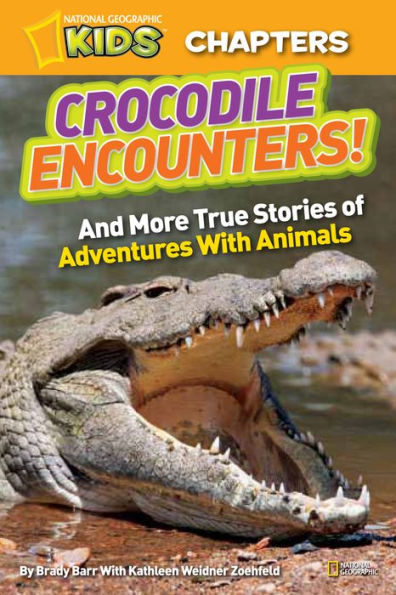Read an Excerpt
Croc Disguise
Hi, my name is Brady Barr, and I’m a zoologist. That means I study animals. I’ve studied all kinds of animals in about 70 countries on Earth. But of all the animals I’ve worked with, crocodiles are my favorite.
There are 23 different types, or species, of crocodilians (sounds like krah-koh-DIL-ee-uhns). I’ve had the chance to see them all in the wild. I’ve been up close to the wide- snouted alligators and caimans (sounds like KAY-mens). I’ve been nose-to-nose with the narrow-jawed crocodiles. And I’ve even studied the weird and wonderful gharial (sounds like GAR-ree-uhl).
Sometimes I have to catch wild crocodiles for my work. For some studies, my team and I need to weigh and measure crocs. For other studies, we need to attach high-tech devices to the crocs. These devices help us keep track of the crocs, or they record information about changes in the areas where the crocs live.
The number of people on Earth is growing every year. More humans on the planet means people need more space. People are moving into areas that were once the wild homes, or habitats, of crocs. With their habitats shrinking, many species of crocodilians are dying out. When a species is dying out, we say it is an endangered species.
The more we know about endangered species and what they need, the better we can help them. But catching wild crocs is a dangerous job—for me and for the crocs!
To catch a croc, I usually have to snare it with a rope. Then I wrestle it until it is very tired. I jump onto its back and tie its jaws shut so it can’t bite. Then I tie its legs. That’s a lot easier said than done!
Even a tired crocodile is very strong. Catching one can turn dangerous quickly. Crocodiles are not used to having people jump on their backs. It is strange for them. That’s why I am always looking for better ways to handle the crocs and get the information we need.
We know that crocodiles are calmer around other crocs than around humans. If only another croc could find out what we need to know. Then it wouldn’t be so hard on the animal we want to study.
Well, on a trip to Tanzania (sounds like Tan-zan-EE-uh), I got to find out what it feels like to be a croc.
It all started when I was giving a talk to a group of children at their school. I was telling them about my work with crocodiles. One small boy raised his hand.
“Dr. Brady,” he asked, “why don’t you dress up as a croc and join their club?”
At the time, I thought that was pretty funny. I laughed and went on with my talk. But I couldn’t shake the idea from my mind. Could it actually work? I wondered. There was one way to find out!
I asked the people at National Geographic if they could build me a life-like crocodile suit. Luckily, they were up for the job!
Artists made the head from a mold of a real crocodile head. That made it look exactly like the real thing! It was made of a material called polystyrene (sounds like pahl-ee-STYE- reen). It is very lightweight, but strong.
Next, the engineers built the body. This part was important. It needed to protect my body if an angry croc decided to bite! They made a set of metal ribs. These formed a strong cage around me. Then the cage was covered by a shield made of Kevlar. The same stuff is used to make bulletproof vests. That would make it hard for even a croc bite to break through!
Finally, the artists made a rubber cape that looked just like crocodile skin. This would cover the body and make it look like a real croc.
At last, my croc suit was ready. And boy, did it look real! My plan was to get close enough to a group of wild crocs to put high-tech devices on their backs. If my test was going to work, I would have to make the crocs believe I was one of them.



